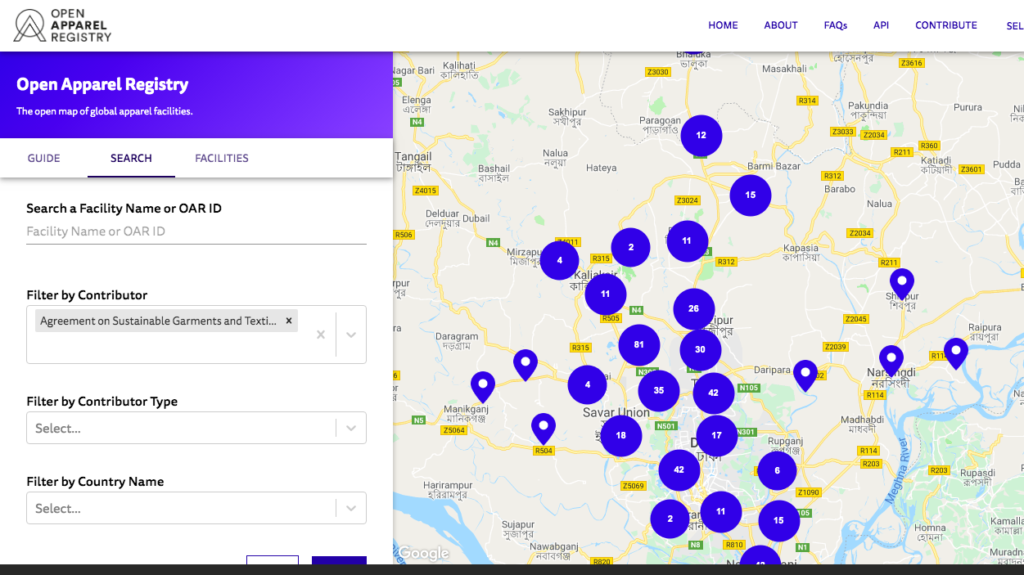Since its launch on March 28, the Open Apparel Registry (OAR) has grown to include over 18,300 facilities in 92 countries. Nearly seventy sources provided the data, and we are in discussions with several additional apparel brands, non-governmental organizations, and other types of contributors interested in uploading their lists of facilities. The facility lists vary widely – from a set of 5,847 facilities uploaded by the Agreement on Sustainable Garments and Textiles (a multi-stakeholder initiative based in The Netherlands) to a yarn supplier and fashion collective with a single facility each.

Whether it’s one facility or ten thousand, the additional lists uploaded over the last four months move us closer to our goals of
- improving name and address data for the global apparel industry,
- increasing transparency into the global apparel supply chain,
- discovering and mapping affiliations between brands and facilities, and
- creating unique OAR ID numbers that can link facilities across systems and databases.
From a data nerd perspective, the benefits of this type of work may seem obvious: it’s much easier to track items, coordinate collaboration and auditing activities, identify efficiency issues, and share information when you have more geographic data. But how do the goals of the OAR impact not just analytical processes but the lives of people involved in the apparel industry?
We’ve already heard of a few fascinating use cases where data from the OAR contributed to decision making by brands and facilities.
- Earlier in 2019, the Business & Human Rights Resource Centre, an international non-profit organization focused on advancing human rights in business and eradicating abuse, described how they used the OAR to support workers striking in Cambodia due to payment issues. The group searched the OAR to discover the brands affiliated with the facilities that employed the striking workers and then contacted them regarding the situation. Thanks to the investigations begun by those brands and pressure from other groups, many of the over 1,000 dismissed workers returned to their jobs. Read more at the Ethical Corporation site.
- Microfinance Opportunities, another international non-profit, researches and reports on the finances of low-income households in order to support financial education and the provision of financial services. The Garment Worker Diaries is one of their ongoing efforts to study the wages and spending of textile workers in Bangladesh, Cambodia, and India. They have used the OAR to match the diaries with facilities and brands and verify compliance information quickly and efficiently. Read more about how the Garment Worker Diaries used the OAR here.
- We are working with various multi-stakeholder initiatives (MSIs) to create opportunities for more efficiently adding data to the OAR. Several of the larger multi-stakeholder initiatives in the apparel sector maintain extensive facility lists but lack methods for easily sharing information with other apparel organizations. Over the next few months, we will be coordinating with an MSI working group (with members from Amfori, Fair Factories Clearinghouse, Higg, SEDEX, SLCP and ZDHC) to develop methods for these groups to efficiently provide their information to OAR, greatly increasing the number of facilities on the site and supporting increased transparency into the apparel supply chain.
We plan to periodically share more stories about the Open Apparel Registry here on the Azavea blog, but you can also sign up for the OAR newsletter to receive monthly updates including new feature announcements, links to new data uploads, and summaries of how people are using the OAR. Or follow along at our open Github repo!
Interested in getting involved with supply chain transparency or adding facilities to the list? Contact the OAR at info@openapparel.org.
